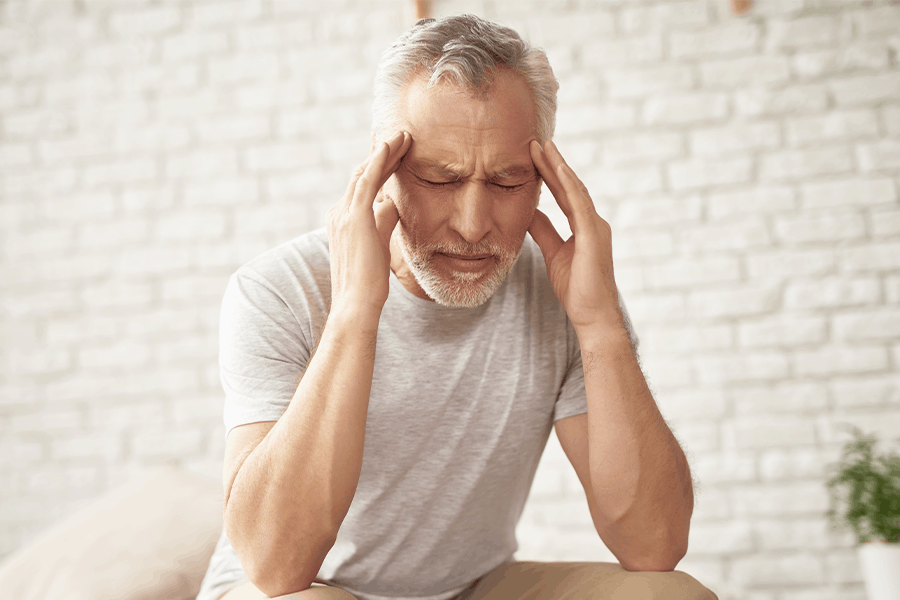- What is a stroke?
- How is a stroke treated?
- What are the risk factors of stroke?
- Can I prevent a stroke?
Any age can experience a stroke, although 80% of them are avoidable.
According to board-certified neurosurgeon Michael P. Bellew, M.D. at Orlando Neurosurgery, “stroke happens spontaneously in both young and old patients for a variety of reasons.”
What is a Stroke?
A stroke may happen if there is an interruption in the blood flow to the brain. In a medical emergency, every second matters because more brain cells perish the longer blood flow is interrupted.
Most strokes are caused by an unexpected obstruction of the arteries leading to the brain (ischemic stroke). Blood leaking into the brain from a burst blood artery is the cause of hemorrhagic strokes. Additionally, there are mini-strokes, also known as transient ischemic attacks, in which the symptoms appear briefly and then go away.
Stroke happens quickly, regardless of the type. This acute sickness manifests as the following signs and symptoms:
- Blurry vision
- Confusion
- Inability to Comprehend Speech
- Difficulty walking
- Numbness or weakness in the arm, face, or legs
- One side of the mouth may droop.
- A severe headache
- Slurred Words
- Trouble coordinating
We use the acronym FAST to warn patients to look out for the following stroke symptoms:
Face—Can the person smile on both sides of their mouth?
Arms—Can the person raise and hold both arms?
Speech—Can the person repeat a statement without slurring their words?
Time—If you notice any or all of these symptoms, call 911 immediately.
How is a Stroke Treated?

Whether a stroke is hemorrhagic or ischemic determines the course of treatment.
The goal of treatment for an ischemic stroke is to rapidly restore brain blood flow. The Teachin’ Brain SurgeonTM, Dr. Bellew, specializes in the surgical and endovascular management of stroke, arteriovenous malformations, and brain aneurysms. In the event of an ischemic stroke, he explains, “we’re able to inject clot buster through the IV or actually go in through the arteries and fix the acute problem by opening whatever artery might be plugged up.”
The drug that breaks up clots is known as tissue plasminogen activator (TPA). TPA can help stroke survivors recover more quickly if it is administered within the first three hours of ischemic stroke symptoms. A blood thinner or antiplatelet medication may also be given to the patient. In some situations, a surgical technique called as thrombectomy can remove the blood clot that clogged an artery and caused the stroke.
The primary goals of treatment for hemorrhagic stroke are patient stabilization and stopping the bleeding that is applying pressure to the brain. To stop the bleeding, you may be given medicine. If the bleeding was caused by a blood vessel that had burst, surgery might be required to fix it. The blood that accumulates inside the brain may also be removed during surgery. There are additional treatments that may help with some of the condition’s negative symptoms, such as high blood pressure, blood sugar problems, brain swelling, fever, or seizures.
“The important thing is to identify what caused the stroke and what we can do to keep it from happening again,” states Dr. Bellew in reference to both types of stroke.
What Are the Risk Factors of Stroke?

Even when stroke strikes unexpectedly, there are usually a number of medical, behavioral, and genetic risk factors.
A family history of stroke is one of the genetic risk factors for the disease. People over 55 are more likely to suffer a stroke, therefore age is a role. Stroke risk is higher in African Americans than in those from other ethnic backgrounds. Men are more likely to have a stroke than women, although women who use birth control pills or estrogen for hormone therapy are at a higher risk than women who do not.
Sedentary behavior and obesity/overweightness are lifestyle risk factors for stroke. Stroke can also result from heavy, frequent binge drinking or from using illegal substances like cocaine or methamphetamine.
Smoking cigarettes or even being around secondhand smoke on a regular basis are medical risk factors for stroke. You run the risk of stroke if you have diabetes or high cholesterol, two conditions that are associated with obesity. Stroke risk has been associated with obstructive sleep apnea, cardiovascular illness, and even COVID-19.
“There are situations where somebody has a lot of risk factors for stroke; however, by limiting these risk factors, stroke can be prevented,” states Dr. Bellew.
Can I Prevent a Stroke?

Stroke can be avoided. You have some control over some risk factors; genetic variables are harder to manage, but you can lower your risk by changing your lifestyle today.
“If they continue to work with their primary care doctor over the years, they should be able to mitigate those problems and control them as much as possible, reducing the chances of stroke,” states Dr. Bellew under these circumstances.
- Here are some immediate actions you may take to reduce your risk:
- Limit your alcohol intake to one drink each day and only in moderation.
- Engage in regular exercise for at least five days a week.
- Reduce your weight so that it falls inside your BMI.
- Reduce your elevated blood pressure to 120/80 ideally.
- Quit smoking.
- Treat any aggravating conditions, such as an abnormal heartbeat (atrial fibrillation) or diabetes.
“Just taking a blood thinning medication can greatly reduce the risk of stroke,” states Dr. Bellew. Medication for blood thinners prevents blood clots from forming, which can result in a stroke.
Consult your doctor before taking a low-dose baby aspirin, despite what you may have heard. Although aspirin is a recommended component of treatment for people with a history of stroke, daily aspirin use carries hazards that may outweigh its benefits.
Sign Up for Our Newsletter
Get the latest news and updates from Orlando Neurosurgery delivered straight to your inbox.


